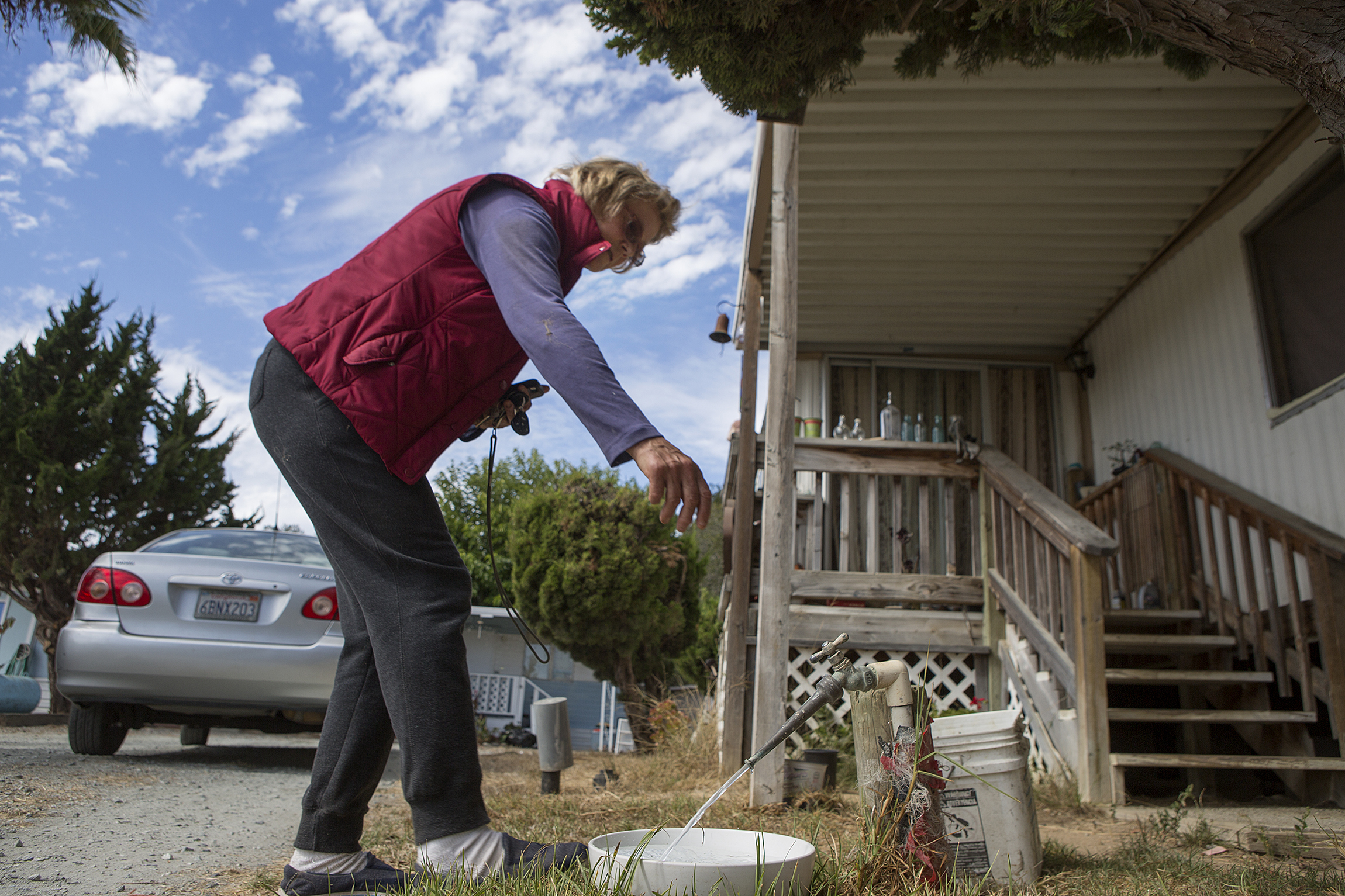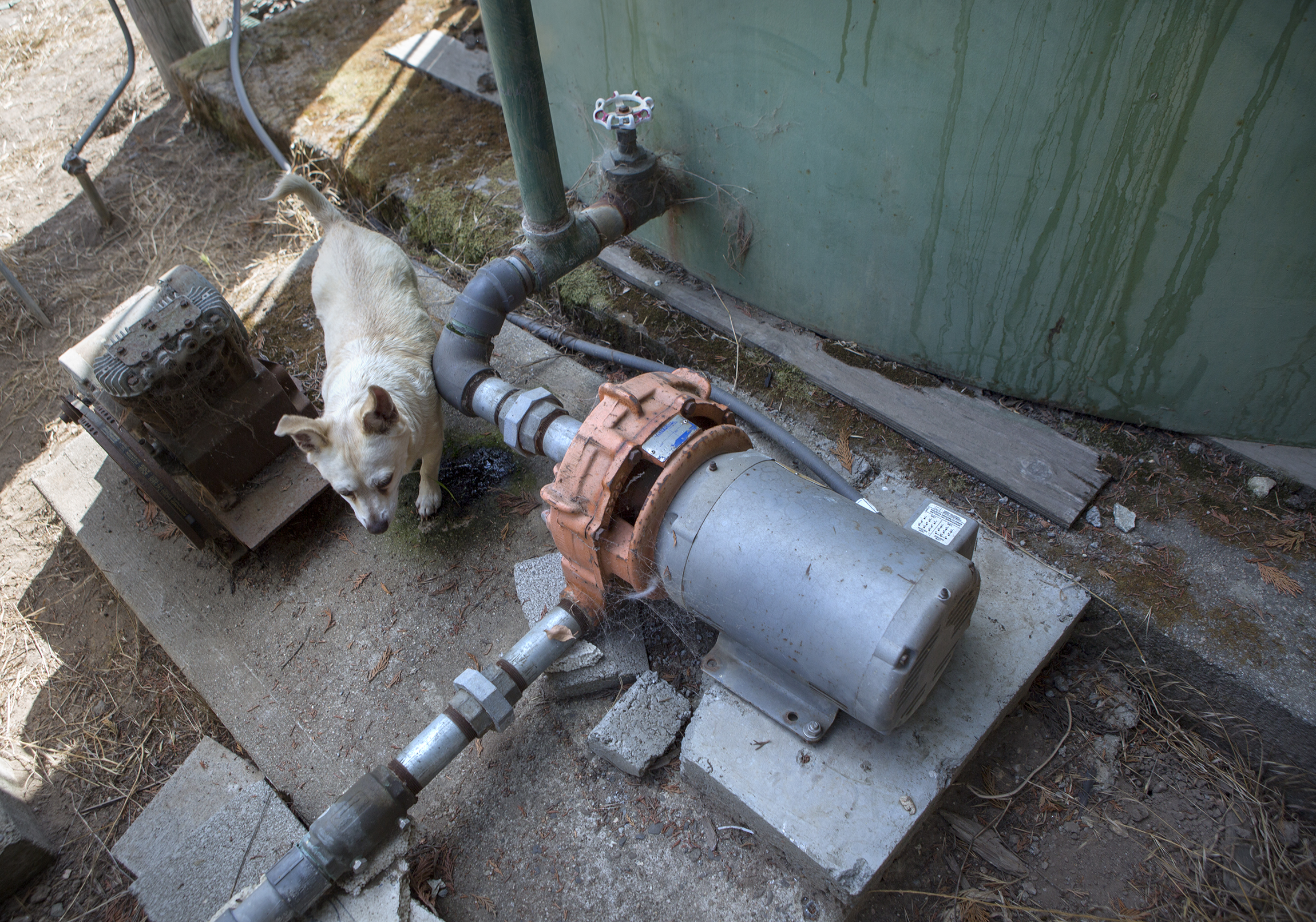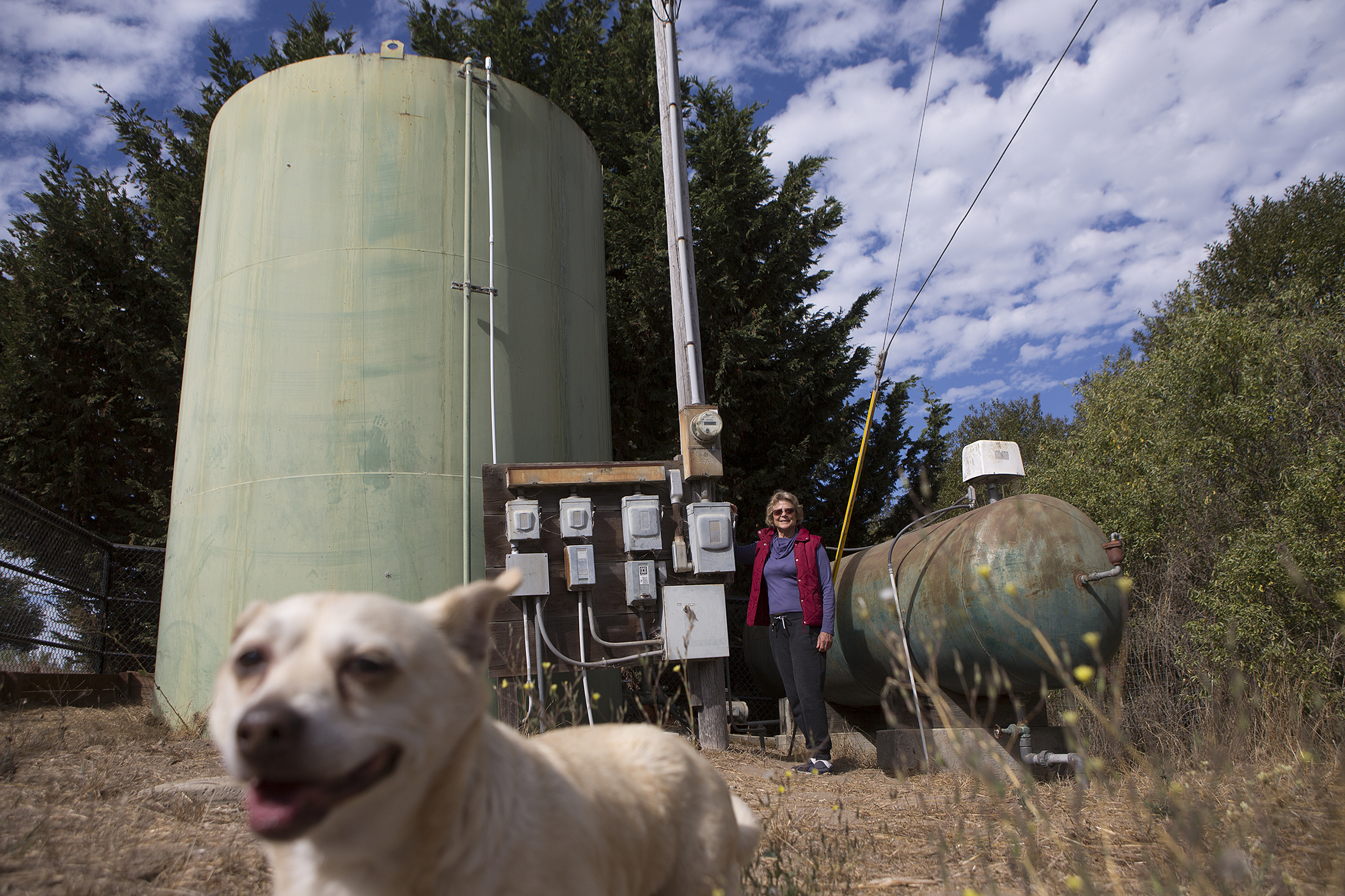By Ian Evans
Photos and video by David Royal
Water quality in North Monterey County — or lack thereof — is the stuff of legend, a source of chagrin at every water cooler conversation. But a proposed method to address the issue has found major pushback from operators of small water systems.
Earlier this year, Monterey County sent out a notice that it would adopt a new ordinance — an option for how residents could treat contaminated drinking water. With that single notice, the county ignited a controversy between locals and government health officials over clean water, local laws and the slog of bureaucracy.
The Monterey County Environmental Health Department sent out its notice in June. Each notice addressed residents who managed a groundwater well with a small number of neighbors (2-15 connected properties) – specifically, water systems that had levels of nitrogen, arsenic or fluoride that the county considered too high.
That applies to almost a quarter — 235 — of the 970 small water systems in the county. Two-thirds of those contaminated systems are in District 2, in North Monterey County, including Prunedale, Royal Oaks and Las Lomas.
The environmental health notice told these water managers that, although their systems were “out of compliance,” the county was adopting a new ordinance that would make it cheaper to meet the county health code. But not everyone was pleased with that news.

Marla Anderson, a Prunedale resident who manages a small water system, said that after she received a notice, “I went online, and I read the ordinance, and I just about flipped my wig.”
Instead of the ordinance offering a new option, Anderson said that it’s unworkable – “The ordinance is so complicated that there’s no way that a manager, such as myself, could implement it.”
The proposed ordinance – based on a recent, similar statewide rule – would allow people to use two new kinds of water-filtration systems to reach compliance: point of use (POU) and point of entry (POE). Point-of-use systems filter water where you plan to use it — with a device for your kitchen faucet, for example. Point of entry filters water before it enters a house or a building.
These options are important, said Ricardo Encarnacion, assistant director of the Environmental Health Department, because the other options are limited for people on out-of-compliance systems. They can drill a new well — but groundwater might be contaminated there, too. They can connect with a nearby system that meets the county’s standards — if such a system exists. Or, they could install a small water treatment plant for the entire system, a very expensive option. The county estimated that it would cost a minimum of $100,000 for the initial installation of centralized treatment, not counting engineering design costs or monthly operational costs. POU/POE systems, meanwhile, can cost as little as $150 to $200.
“We have been listening to the communities who said, why can’t the point-of-use system be used as an option to be compliant?” said Encarnacion. “So, since the state crafted a regulatory parameter or guidance, we took that opportunity to use that state system as a model, but tailor it for small water systems.”
“This is just life in Prunedale. You have people who don’t want to be told what to do. They want to write the lyrics to their own song.” Russ Wilcox
But Anderson and other objectors say that the department may have followed the state’s example a little too closely. The state’s rule was meant for much more complicated, larger systems of around 200 connections, rather than for fewer than 15.
Anderson said that, as the volunteer manager of her 11-house system, getting into compliance would require her to “coordinate with the households, in terms of getting the point-of-use devices installed and maintained, and water samples collected, and water samples submitted. And filling out the county’s required quarterly reports, filling out their annual reports. Notifying water users about the system in their appropriate language, and this whole host of other regulations.”
In addition, the compliance would only be temporary. Systems would have to be renewed every three years, during which the department expects the connected households to search for a way to make one of the other compliance options work.
Russ Wilcox, another Prunedale small water system manager, said that the on top of everything managers have to do now, “It’s just overkill.”
“Here we are as residents taking on the responsibility of handling billing, putting out requests to a local well company to do work on the well and to disseminate information,” said Wilcox. On top of that, he said, getting people to just pay their bills on time is hard enough, let alone try to get them to organize and vote on whether to install new filtration systems.
“This is just life in Prunedale,” said Wilcox. “You have people who don’t want to be told what to do. They want to write the lyrics to their own song.”

Indeed, many people connected to contaminated water systems have chosen a fourth option – not complying. Residents just use bottled water for coffee and drinking water, or install their own filters that don’t meet county code.
But the Environmental Health Department’s notice sparked concern that the department will more heavily enforce the ordinance and take this fourth option away.
Encarnacion insists that there are no plans to enforce the ordinance or shut off people’s water. He did confirm, however, that the department has the authority to do that. He said that shutting off water has never been the department’s strategy and that wasn’t going to change, though he fell short of saying the county would never use enforcement.
“We could enforce, but it does not make sense to enforce because the options to be compliant are unrealistic right now,” said Encarnacion. “It’s too expensive. The costs are too high. It’s too complex.”
Instead, he said this effort is about trying to provide an extra option, not clamping down on residents.
“What we’re trying to say is, if somebody wants to do this, this is how you can do it to meet health standards,” said Encarnacion. “If you don’t do it, then you’re still in the same place that you’re at.”
But that message is either being communicated poorly, or residents just don’t believe it.

After she received her notice, Anderson reached out to other upset water managers through social media. Soon, they formed a Facebook group called Monterey County Water Systems (MOCOWS). They began drawing up and sharing petitions, supervisor phone numbers, sharing meeting dates and encouraging each other to show up and make their voices heard.
At an Oct. 2 Monterey County Board of Supervisors meeting, Anderson and other MOCOWS members like Wilcox spoke out against the ordinance and shared their fears of enforcement and frustration with the process. District 2 Supervisor John Phillips said he had heard many of these complaints — “I had a town hall meeting on environmental health and I got beat up pretty good,” said Phillips — and he shares many of these concerns.
To address this issue, supervisors delayed voting on the ordinance and created a task force. Each supervisor will pick two task force members, and the group will study the issue and inform the department as to how it should change the ordinance. The board will review the results in early December.
But some say the task force might only complicate things further.
MOCOWS has already grown beyond Facebook and is now a local lobbying group, says Anderson. Although there are only about 65 members, a recent Change.org petition drafted by MOCOWS that lays out the ordinance changes the group wants, has 140 signatures as of this writing.
And Anderson says MOCOWS members are increasingly worried that they will not get the changes needed because the affected managers are not adequately represented on the task force (Phillips gets to choose only two members, even though two-thirds of the affected systems are in his district).
Anderson wouldn’t reveal what MOCOWS’ plans are if they feel they aren’t being heard, but she said they had some “politicking” back-up plans. It’s not clear yet how warranted MOCOWS’ fears are, how much the task force will change the ordinance or whether North County residents will be pleased with the results. But Encarnacion says that all the feedback is getting through.
“Right now, as the standard is currently written, it’s a little bit too complex, a little bit too wordy, a little bit too onerous in terms of the paperwork involved,” said Encarnacion. “We’re trying to make it workable.”
Have something to say about this story? Send us a letter.